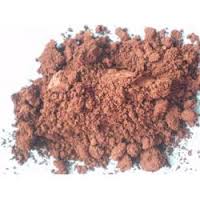Iron is the fourth most common element in the Earth's crust. Iron exists in a wide range of oxidation states which can range in colour form a yellowish-orange through to a reddish-brown to almost black, while a clean iron surface is a lustrous silvery-gray.
Function of Iron in the Body
Around 70% of your body's iron is found in the part of the red blood cells called haemoglobin and in muscle cells called myoglobin. . Haemoglobin is essential for transferring oxygen in your blood from the lungs to the tissues. About 25% of the iron in the body is stored as ferritin, found in cells and circulates in the blood. Approximately 5% of body iron is a component of certain proteins, essential for respiration and energy metabolism and as a component of enzymes involved in the synthesis of collagen and some neurotransmitters.[1][2].
Iron Deficiency
Since iron plays a pivotal role in the formation and function of red blood cells, iron deficiency can show the same signs and symptoms as anaemia
| Signs | Symptoms |
|---|---|
| Brittle nails | Frequent infections |
| Swell and/or soreness of the tongue | Restless leg syndrome |
| Cracks in the side of the mouth | Craving for non food items |
| Enlarge spleen |
References
- Bothwell, T.H. 1979. Iron metabolism in man. London, Blackwell Scientific Publications
- Mascotti, D.P., Rup, D. & Thach, R.E. 1995. Regulation of iron metabolism: Translational effects medicated by iron, heme and cytokines. Ann. Rev. Nutr., 15: 239-61.

